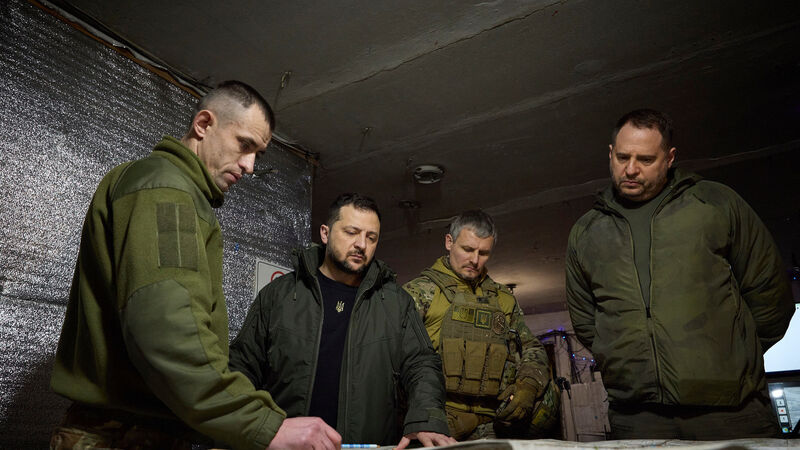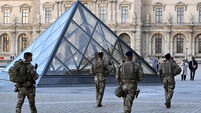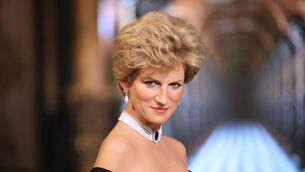US and Russia draw up peace plan for Ukraine that includes concessions from Kyiv

The US and Russia have drawn up a plan aimed at ending the war in Ukraine that calls for major concessions from Kyiv.
Sources suggest the deal would include granting some demands the Kremlin has made repeatedly since the full-scale invasion began nearly four years ago.

It was not clear what, if any, concessions the proposal asks of Russia.
The same source confirmed that promises from Moscow of no further attacks are part of the framework.
As reports of the plan emerged, blindsided European diplomats insisted they and Ukraine must be consulted.
US special envoy Steve Witkoff has been quietly working on the plan for a month, receiving input from both Ukrainians and Russians on terms that are acceptable to each side, according to a senior US official.
US President Donald Trump is said to have been briefed on the plan and supports it.

The talk of a secret peace plan piled more pressure on Ukrainian President Volodymyr Zelensky, who is marshalling his country’s defences against Russia’s bigger army, visiting European leaders to ensure they continue their support for Ukraine and navigating a major corruption scandal that has caused public outrage.
Several high-ranking army officials, including army secretary Dan Driscoll, were in Kyiv on Thursday to give a new push to peace efforts and assess the reality on the ground in Ukraine, US officials said.
Mr Zelensky’s office said in a statement that he formally received the peace plan on Thursday from American officials.
The statement said Mr Zelensky expected to talk to Mr Trump in the coming days about diplomatic opportunities and what was needed for peace.
Mr Zelensky underlined Ukraine’s main conditions for peace and promised to work on the conclusions reached in the meetings with US officials, the statement said.
European leaders have already been alarmed this year by indications that Mr Trump’s administration might be sidelining them and Mr Zelensky in its push to stop the fighting.

Mr Trump’s at-times conciliatory approach to Russian President Vladimir Putin has fueled those concerns, but Mr Trump adopted a tougher line last month when he announced heavy sanctions on Russia’s vital oil sector that come into force Friday.
“For any plan to work, it needs Ukrainians and Europeans on board,” EU foreign policy chief Kaja Kallas said at the start of a meeting in Brussels of the 27-nation bloc’s foreign ministers.
She added: “We haven’t heard of any concessions on the Russian side.”
German Foreign Minister Johannes Wadephul said he talked by phone with Mr Witkoff and Turkish Foreign Minister Hakan Fidan to discuss “our various current efforts to end Russia’s war of aggression against Ukraine and thus finally put an end to the immeasurable human suffering”.

The conversations “also focused on specific ideas that are currently being discussed,” Mr Wadephul said in a statement. He did not elaborate.
It was not clear whether the foreign ministers had seen the peace plan, which was first reported by Axios.
The proposal was drawn up by US and Russian envoys, and is said to include forcing Ukraine to cede territory, a prospect Mr Zelensky has ruled out.
The Trump administration’s diplomatic efforts this year to stop the fighting have so far come to nothing.

The proposal, which could still be changed, is said to call, in part, for Ukraine to cede territory to Russia and to abandon certain weaponry.
It would also include the rollback of some critical US military assistance.
Russia, as part of the proposal, would be given effective control of the entire eastern Donbas region, Ukraine’s industrial heartland made up of the Donetsk and neighbouring Luhansk regions, even though Ukraine still holds part of it.
Mr Putin has listed the capture of the Donbas as the key goal of the invasion.
Mr Witkoff and Kirill Dmitriev, a close adviser to Mr Putin, have been key to drafting the proposal.
A peace deal that requires Kyiv to hand over territory to Russia would not only be deeply unpopular with Ukrainians, but it also would be illegal under Ukraine’s constitution.
Mr Zelensky has repeatedly ruled out such a possibility.

US secretary of state Marco Rubio said on X that American officials “are and will continue to develop a list of potential ideas” for a lasting peace agreement, which “will require both sides to agree to difficult but necessary concessions.”
Kremlin spokesman Dmitry Peskov said that “there are no consultations per se currently underway” with the US on ending the war in Ukraine.
“There are certainly contacts, but processes that could be called consultations are not underway,” he told reporters.
Though the European diplomats appeared caught by surprise, reported elements of the plan were not new.
Mr Trump said last month that the Donbas region should be “cut up”, leaving most of it in Russian hands.
EU diplomats have accused Mr Putin of being insincere in saying he wants peace but refusing to compromise in negotiations while sustaining Russia’s grinding war of attrition in Ukraine.

Ms Kallas, the EU’s chief diplomat, chided Mr Putin’s forces for continuing to target civilian infrastructure in Ukraine, a day after a strike on the western city of Ternopil killed 26 people and wounded 93 others.
About two dozen people were still missing.
Ms Kallas said that “if Russia really wanted peace, it could have … agreed to (an) unconditional ceasefire already, some time ago”.
Mr Trump has stopped sending military aid directly to Ukraine, with European countries taking up the slack by buying weaponry for Ukraine from the United States, which has given Europe leverage in talks on ending the conflict.











